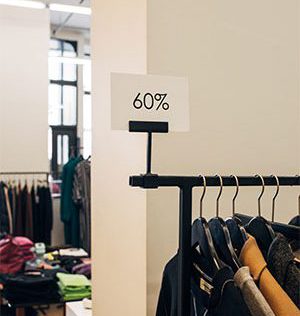Retail Pricing: Understanding How Power Shifted to the Consumer
Remember the good old days when retailers controlled pricing? With limited competition, they were able to offer standardized assortments across all their sales outlets, purchased in a manner that delivered the lowest possible unit cost. Pricing was based on a set of established rules, defined with two goals in mind: maximizing the sell-through of products and achieving high per-product profit margins. Retailers’ biggest concerns centered around maximizing operational and logistics efficiencies, to keep those costs as low as possible.
All that changed when new retailers entered the global retail landscape, with larger product assortments, diverse sales channels, and radically different operating models. While most of the attention went to demand aggregators like Amazon and Alibaba, it was actually channel masters like Walmart that started this shift. Suddenly consumers had new purchasing options, and these new-generation retailers captured their attention by focusing on two critical attributes: low product prices and instant availability.
Unfortunately, the rise of demand aggregators and online shopping channels dovetailed with the Great Recession of 2008, when consumers felt new economic pressures. Suddenly price was everything. According to RSR Research, consumers’ price sensitivity has been a “top three” business challenge every year from 2009 through 2019. And, in a 2017 RSR study, 49% of retailers indicated that consumers’ price sensitivity had become their only driver when choosing where to shop.
The Problem: Not Everyone Can Win Based on Price
 The past decade has revealed the single biggest challenge facing retailers: not everyone can win the pricing war. With their high-volume purchasing agreements and hyper-optimized supply chains, mega retailers will always be able to offer the lowest prices over the long term.
The past decade has revealed the single biggest challenge facing retailers: not everyone can win the pricing war. With their high-volume purchasing agreements and hyper-optimized supply chains, mega retailers will always be able to offer the lowest prices over the long term.
So how have most retailers responded? With short-term product promotions that cut into margins but draw consumers into the store. However, this strategy is unsustainable over the long term. Not only have consumers been trained to wait for promotions, but they have too many other options. Instead of filling their shopping cart at one retail outlet — as retailers hope they will — instead consumers travel from store to store, picking and choosing only the promoted items. From a retailer perspective, it’s a formula for failure.
Going Beyond Price, to Create Real Value
Retailers have begun to realize that they must go beyond short-term promotions to win consumers’ loyalty over the longer term. Their one advantage over the mega retailers, who offer an impersonal shopping experience, is that they can create high levels of service and customized product offerings — creating the foundation for a close personal relationship with their customers.
Multiple studies by RSR Research have demonstrated that consumers’ intolerance of an impersonal shopping experience is the greatest threat to mega retailers — as well as the single largest opportunity for smaller retailers. While consumers are price-sensitive, they are also willing to pay a higher price for what they perceive as higher value.
The good news is that retailers have a huge volume of data available to them today, revealing shoppers’ preferences, behaviors and value drivers. The bad news? With so much information, retailers often don’t know exactly what to do with it. They lack the ability to sort the trivial data from the critical insights — and they’re not sure how to translate that critical information into meaningful consumer offers.
By leveraging artificial intelligence (AI) and powerful analytics, today’s leading retailers are beginning to solve this challenge and seize some power back. Read the next installment of this two-part blog series to discover how these new capabilities can help your business win the pricing war — by changing the rules of engagement.

